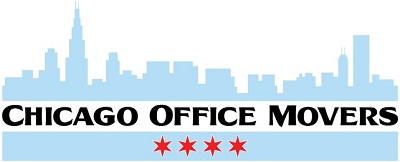
11 Key Factors to Consider When Choosing an Office Space
11 Key Factors to Consider When Choosing an Office Space
Written by Kari-Ann on . Posted in Office Moving

As your lease nears its end, it’s time to start searching for a new office space. The ideal location should align with the evolving needs of your employees—especially as workplace expectations have shifted significantly since the pandemic. Whether you're wondering “what to look for in a new office space” or “how to choose the best office location for a hybrid team,” here are 11 essential factors to guide your decision.
Location
When deciding where your next office should be, think about convenience for your team. While an office on the outskirts may be cheaper, a central business district (CBD) location is usually more appealing to employees who value a short commute. A good location can also improve your brand visibility and help attract high-quality talent. Some businesses seek proximity to industry clusters, while others prefer standing out in a unique location. Choose what aligns with your operational strategy. Once you’ve found the right space, it’s equally important to introduce the new location to your customers and local audience. Here’s how to introduce your office to the community after relocating to make a strong first impression and maintain business continuity.
Amenities
A prime location is not only accessible to employees but also vendors and clients. Plus, an office near coffee shops, a gym, and stores allow staff to grab a bite, exercise, and shop right after work, factors that increase their happiness and productivity. Onsite amenities are equally valued. These may include fitness centers and wellness rooms, valet services, and even laundry facilities. Security personnel who work around the clock can also improve the level of safety the employees and visitors feel when on the premises.
Office Size
When determining how much office space you need, consider both your current headcount and future growth. Will you be hiring soon? Will more employees be working remotely in the future? Choose a space that accommodates flexible work models and potential expansion.
Layout
The best office layout depends on your team's workflow. Collaborative teams may prefer an open-plan layout, while sales teams and client-facing departments may need private spaces. Flexible configurations are a smart choice for evolving work styles.
Parking
Limited parking can lead to frustration. Offices with onsite parking, a nearby parking garage, or ample street parking simplify commuting for staff and visiting clients. Ask about employee parking permits and guest passes before signing a lease.
Public Transportation
Especially for companies situated in cities, the proximity of public transportation should be a prime consideration. Check train and bus routes and schedules to ensure employees have access. Don’t forget clients, who should be able to travel from the airport to the office with the least hassle.
Meeting Rooms
If you're wondering “how many meeting rooms does my office need?”, consider your meeting frequency and team size. Dedicated rooms for client presentations, team huddles, and virtual meetings support better communication and productivity.
Lease Length
Today’s workplace trends favor flexibility. Instead of locking into a 5- to 10-year lease, many companies choose short-term or renewable leases that adapt to changing business needs—especially as remote and hybrid work continues to evolve.
Neighborhood
Safety is a concern for many people, employees included. When staff feel safe, they are likely to perform better. Choose an office space in a neighborhood with a low crime rate. The building and its location should feel safe to not only valued team members but also to clients. Ideally, the neighborhood in which a prospective office is located should be walkable. Staff feel greater ease when they can walk to the nearby bank or coffee shop. The right neighborhood is one that fulfills the needs of team members outside of working hours.
Future Needs
A desirable office space is one that serves the technological needs of its staff both now and in the future. It should accommodate advanced equipment, like smart video conferencing hardware or interactive digital whiteboards, to prevent frozen videos, dropped calls, and interruptions. A building that remains in top condition facilitates workflow. Companies that enjoy a positive working relationship with their building supervisor or landlord can be assured that their existing and future needs, such as building maintenance, are handled in a timely manner.
Atmosphere
The building’s architecture, interior design, and ambiance help shape visitors’ and employees’ impressions. A modern, well-maintained office in a professional building contributes to your company’s brand credibility and corporate culture.
Office Relocation Services from Chicago Office Movers
If you're still wondering “how do I move to a new office without disrupting business?”, our team at Chicago Office Movers is here to help. We specialize in end-to-end corporate relocation planning and logistics. Whether your business is relocating within Illinois, across state lines, or internationally, we manage every detail of the transition to reduce stress and downtime.

Our services include:
- Short- and long-term commercial storage
- Secure document and record storage
- Full-service packing, unpacking, and furniture assembly
- Insurance coverage and relocation consulting
- Union-certified and licensed moving professionals
We’ve handled everything from confidential IT systems to delicate lab equipment and high-value artwork. Your business assets are in expert hands.
Let us coordinate your move while your team stays focused on operations. Our relocation experts ensure a smooth, budget-conscious, and timely transition to your new space.
Call our Elk Grove Village, Illinois office today at 312-244-2246 to schedule your consultation.
Frequently Asked Questions
Contact Us
Related Services
- Corporate Moving
- Commercial Moving
- Reliable Commercial Storage
- Specialty Commercial Moving
- Furniture Assembly
- Movers for Office Renovation
- Machinery Moving
- Library Moving
- Lab Moving
- Server Room Moving
- Office Movers in Rosemont, IL
- Commercial Moving in Bolingbrook, IL
- Commercial Movers in Naperville, IL
- Commercial Movers in Des Plaines, IL
- Commercial Moving Services in Aurora, IL
- Schaumburg Office Movers
- Commercial Moving Services in Oakbrook, IL
- Commercial Movers in The North Shore
- Commercial & Office Moving Services Deerfield, IL
- Commercial & Office Movers in Hinsdale, IL
- Elk Grove Village Commercial Movers
- Furniture, Fixtures and Equipment Services
- Commercial Mover in Lincolnshire, IL
- Office Packers in Lincolnshire, IL
- Office Decommissioning in Lincolnshire, IL
- Professional Movers in Downers Grove, IL
- Moving Company in Chicago, IL

Director of Marketing & Development
Office: (847) 621-5176
Cell: (312) 497-3203
At Chicago Office Movers, Kari-Ann is our Director of Marketing & Development. As the master of visibility, she is responsible for all things Branding and Marketing related. Kari-Ann comes to us with experiences in Marketing for a multi-brand and multi-location company, the service industry, non profit marketing event planning and fundraising, and retail management. She is the Chair of the Board for the Schaumburg Business Association 2021 & 2022, a member of the Elk Grove Village Chamber Board of Directors, and past chair and top fundraiser for the Northwest Suburban Walk To End Alzheimer’s.
Kari-Ann received her Bachelor of Business Administration in Marketing from Western Michigan University. She is Master Certified in Constant Contact Email Marketing and has held numerous social media training classes.
















